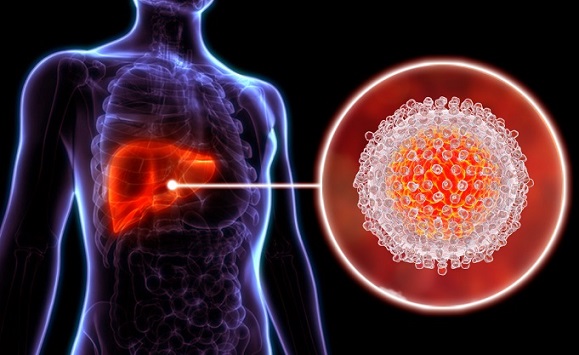Global Hepatitis Deaths Surge While Most Infected Still Undiagnosed and Untreated
Nikhil Prasad Fact checked by:Thailand Medical News Team Apr 09, 2025 3 days, 18 hours, 36 minutes ago
Medical News: A new global report has revealed shocking data about the spread and impact of hepatitis B and C, two of the world’s deadliest infectious diseases. Despite the availability of effective vaccines and treatments, over 1.3 million people died from hepatitis-related causes in 2022 alone - more than from HIV or malaria - and over 2.2 million people were newly infected that year. Preliminary figures from consolidated global data for 2023 and 2024 indicates that hepatitis deaths and infections are rising still!
 Global Hepatitis Deaths Surge While Most Infected Still Undiagnosed and Untreated
Global Hepatitis Deaths Surge While Most Infected Still Undiagnosed and Untreated
The study was conducted by a wide coalition of researchers from major global institutions, including the World Health Organization (WHO) headquartered in Geneva, Peking University in China, the Center for Disease Analysis Foundation in the USA, Imperial College London, the University of Bristol, and various WHO regional offices spanning Africa, Asia, the Americas, and Europe.
This
Medical News report underscores that while some progress has been made since 2016, the world is still far from reaching the 2030 goal of eliminating viral hepatitis as a public health threat. The report analyzed validated data submitted by 187 countries and territories, revealing both promising trends and glaring shortfalls.
Hepatitis Still One of the World's Top Infectious Killers
In 2022, an estimated 294 million people were living with chronic hepatitis B (HBV), while another 50 million were infected with hepatitis C (HCV). These two infections caused over 1.3 million deaths, placing hepatitis on par with tuberculosis as one of the top infectious disease killers globally.
Worryingly, the vast majority of infected individuals are still undiagnosed and untreated. Only 13.4% of those with HBV knew their status in 2022, and less than 3% of them had received treatment. For hepatitis C, diagnosis rates were slightly better at 36%, and 17% had received treatment.
Africa and Asia Carry the Heaviest Burden
The burden of new hepatitis infections has dramatically shifted towards Africa and Asia. Africa now accounts for 65% of new HBV infections, largely due to poor coverage of hepatitis B birth-dose vaccines for newborns - only 17% of African newborns received this crucial shot compared to 79% in the Western Pacific region.
In South-East Asia, meanwhile, hepatitis C remains a serious concern, with nearly a quarter of new global HCV cases occurring in this region. EMRO (Eastern Mediterranean Region), including countries like Egypt, also reported high HCV incidence but showed progress due to large-scale treatment campaigns.
Treatment and Diagnosis Gaps Widening
Despite having a highly effective vaccine for HBV and curative drugs for HCV, the majority of people are still not getting access to the care they need. Of the 254 million living with HBV, only 6.6 million had received treatment by 2022. For HCV, 12.5 million had been treated globally between 2015 and 2022 - far b
elow the numbers needed to make a significant dent in disease burden.
Countries such as Egypt have demonstrated that elimination is possible. Egypt alone treated 4 million people with HCV and reduced its national prevalence by almost a third in just a few years. However, these success stories are the exception rather than the rule.
A Narrow Window for Action Before 2026
The WHO warns that unless countries act swiftly, the opportunity to achieve the 2030 elimination targets will be lost. The years 2025 and 2026 are considered a critical window to scale up testing, diagnosis, and treatment access. The report emphasizes that investment in hepatitis elimination is not only a health imperative but also an economic one. For every dollar spent, the return in terms of reduced cancer, mortality, and future treatment costs is estimated to be two to three times higher.
To meet the elimination goals, the world must diagnose 90% of all infected individuals and treat 80% of those diagnosed. As it stands, the world is far from this target.
Conclusion
The report serves as a wake-up call for global health authorities. Despite having the tools to prevent, diagnose, and treat hepatitis, millions are still dying or living with life-threatening infections unnecessarily. The most alarming trend is the rising hepatitis B mortality, particularly in Africa, which now accounts for the bulk of new infections. There is still hope - but only if countries commit to a public health approach, expand vaccination and screening programs, ensure affordable treatment access, and address the systemic gaps that are hindering progress. If action is not taken immediately, millions more lives will be lost, and the opportunity to eliminate hepatitis by 2030 will slip away forever.
The study findings were published on a preprint server and are currently being peer reviewed.
https://papers.ssrn.com/sol3/papers.cfm?abstract_id=5196987
For the latest on Hepatitis, keep on logging to Thailand
Medical News.
Read Also:
https://www.thailandmedical.news/news/new-study-explores-the-role-of-timm29-in-the-hepatitis-b-virus-life-cycle
https://www.thailandmedical.news/news/hepatitis-d-virus-study-finds-key-genetic-patterns-and-recombination-risks
https://www.thailandmedical.news/news/researchers-uncover-a-new-mechanism-that-enhances-hepatitis-c-virus-survival
https://www.thailandmedical.news/pages/thailand_doctors_listings
https://www.thailandmedical.news/articles/hospital-news
